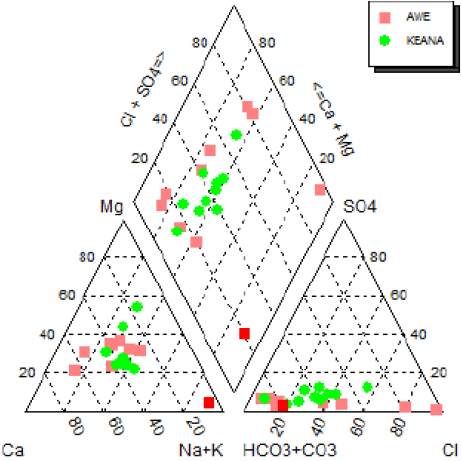Groundwater Quality Assessment Using Multivariate Analysis and Water Quality Index in some Saline Fields of Central Nigeria
Keywords:
Awe-Keana; Multivariate analysis; Saline field; Water quality; Water quality indexAbstract
The groundwater of Awe-Keana saline fields in central Nigeria was studied to investigate physicochemical processes that influence its groundwater chemistry and quality and hence determine its quality for drinking and irrigation purposes. Twenty groundwater samples were collected from hand-dug wells and boreholes for the purpose of identifying the hydrochemical characteristics and assessing the quality of groundwater of the Awe-Keana saline fields. Principal component analysis was performed to identify the hydrochemical controlling processes while water quality index (WQI) was used to determine the overall quality of the water samples. Multiple regression analysis, however, revealed the parameter(s) that impact the overall water quality the most. The results showed that the chemical compositions of the groundwater of the area is influenced by weathering of host
rocks, salinity and anthropogenic activities. Four hydrochemical facies were deciphered (Ca-Mg-HCO3, Na-K-HCO3, Na-K-Cl-SO4, and Ca-Mg-Cl-SO4) and this revealed the diversity in the chemical controlling processes that yield different facies. Two clusters of water groups were identified from cluster analysis, namely, groundwater characterized with very high salinity, high nitrate contamination and high Ca, Cl, Na, and HCO3 ionic concentrations and groundwater with high Mg, K, and SO4 ionic concentrations. Saturation indices in relation to different minerals showed that precipitation and dissolution processes gave rise to the concentrations of different ions in the groundwater. Water quality assessment showed that about 85 % of the groundwater of the area is unsuitable as drinking water but, generally suitable for irrigation. Multiple regression analysis revealed that NO3 ion among the hydrochemical parameters measured was observed to be the major pollutant in the groundwater of the study area.

Published
How to Cite
Issue
Section
Copyright (c) 2021 Journal of the Nigerian Society of Physical Sciences

This work is licensed under a Creative Commons Attribution 4.0 International License.







